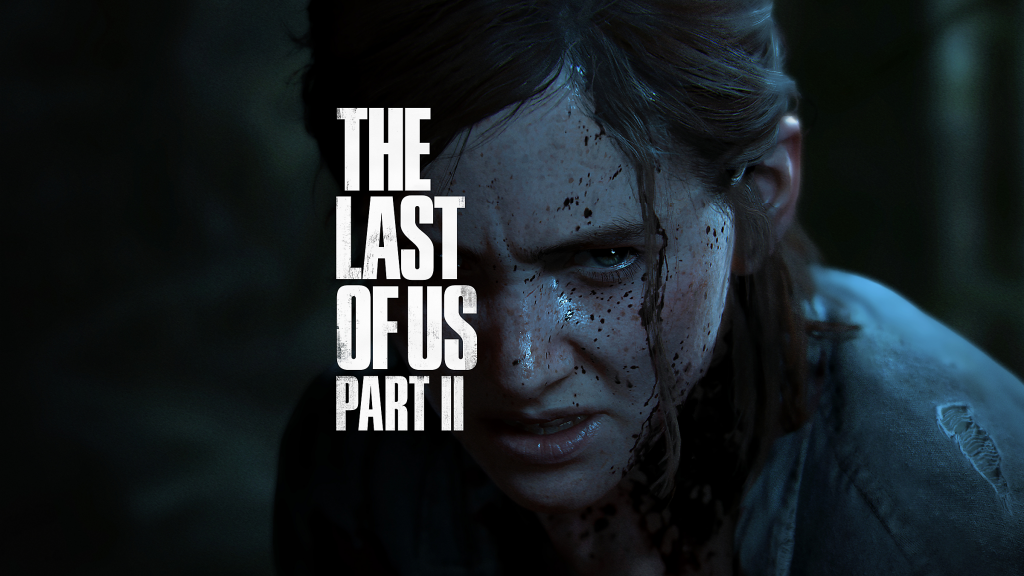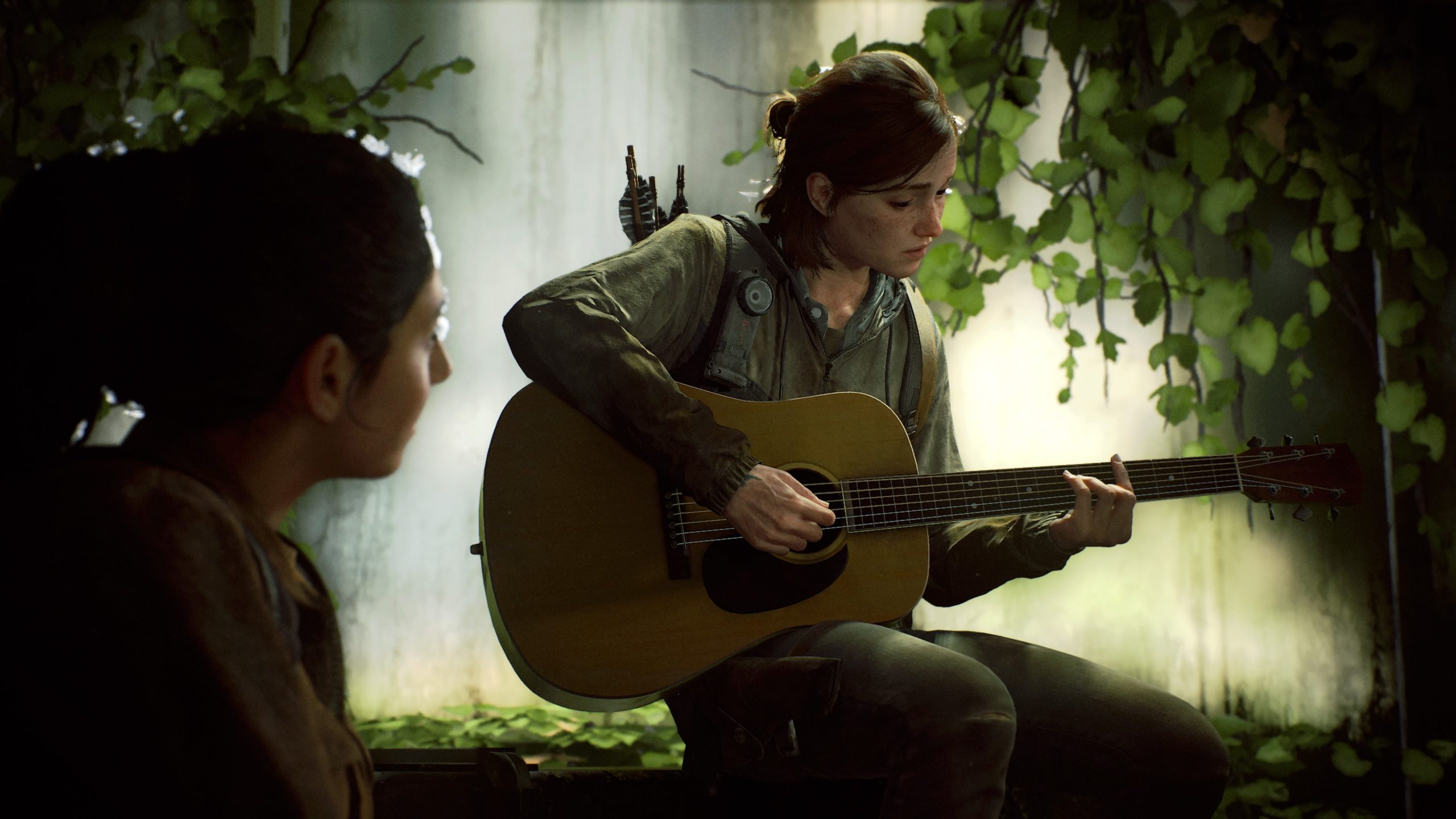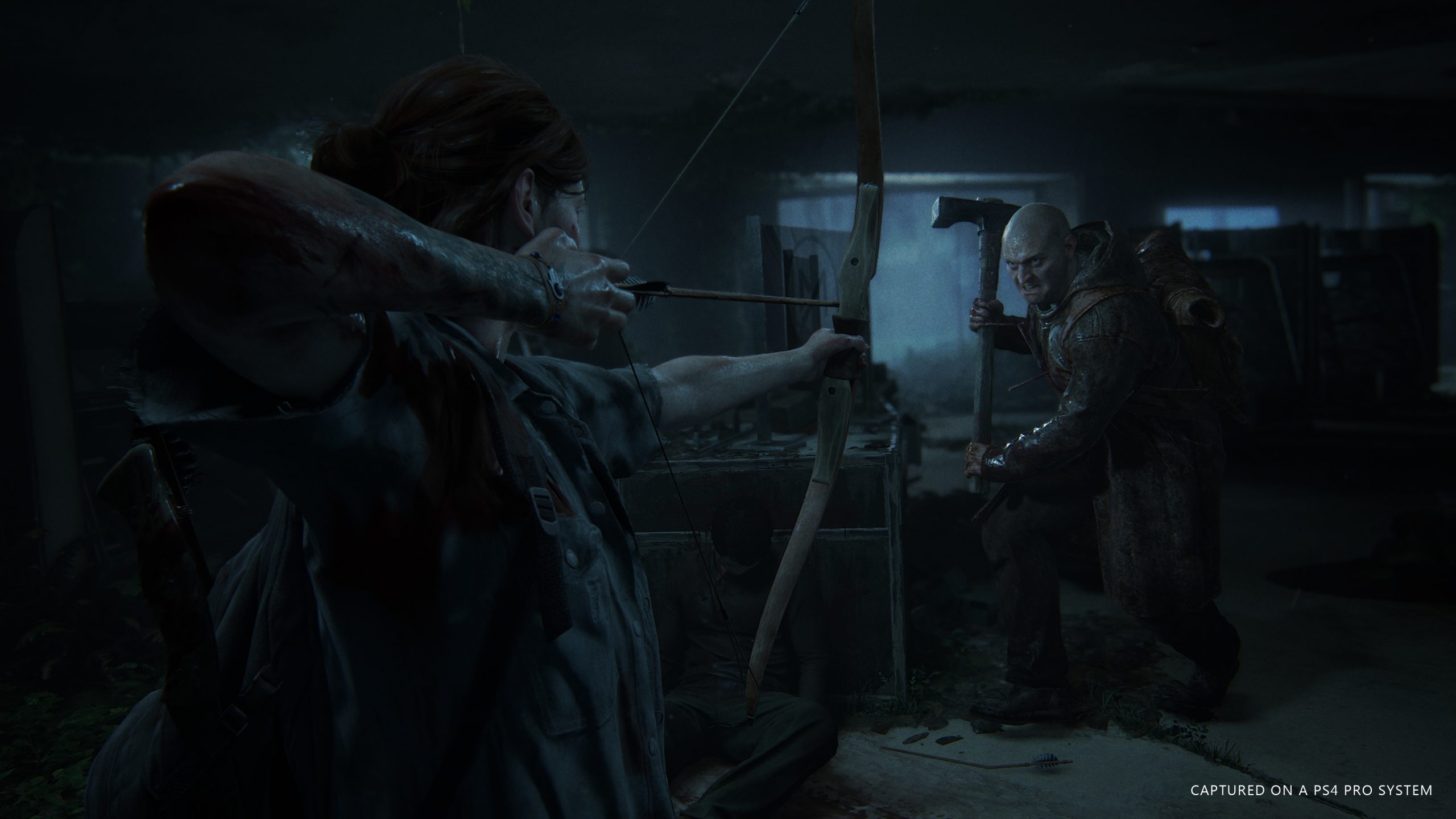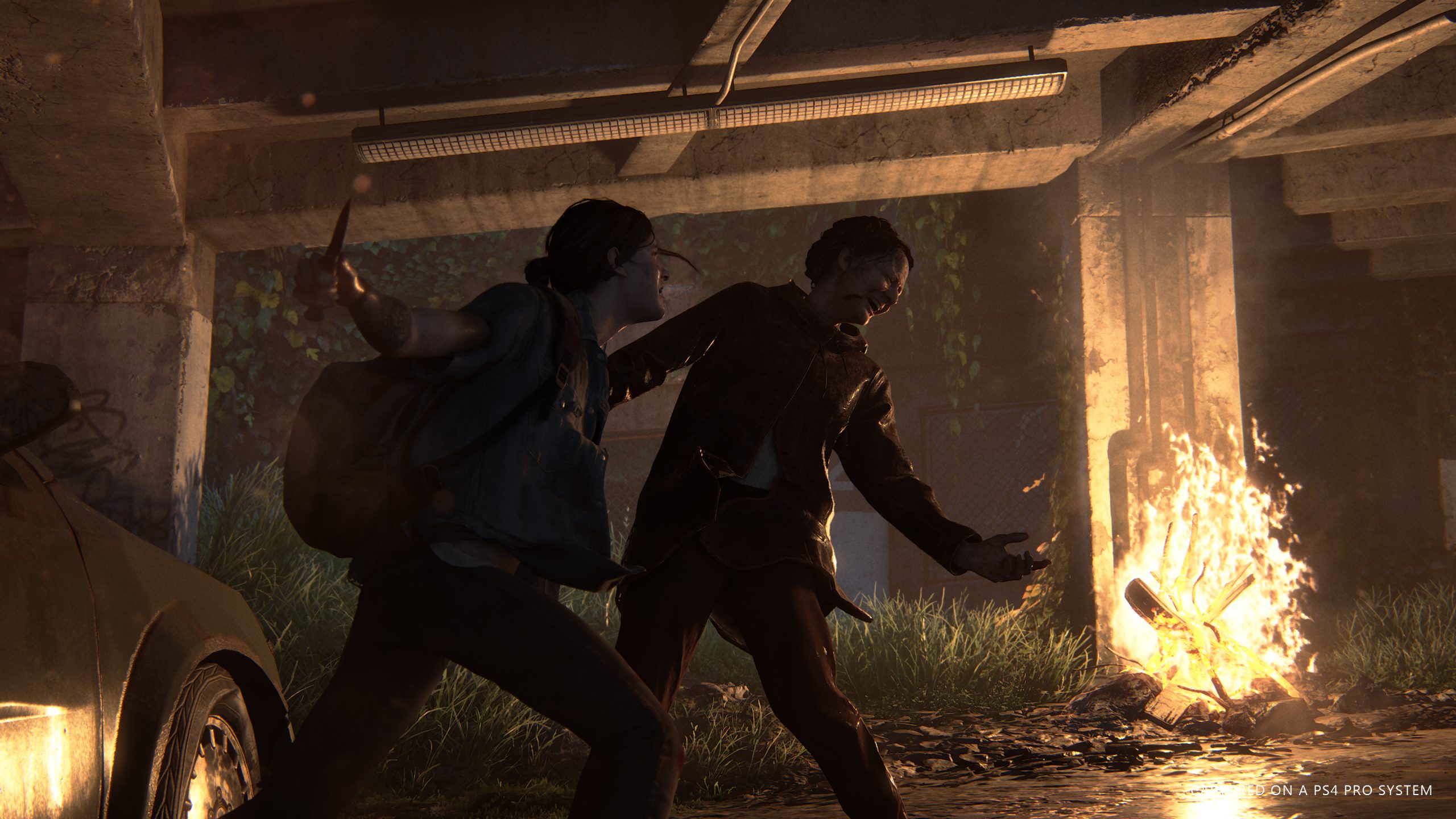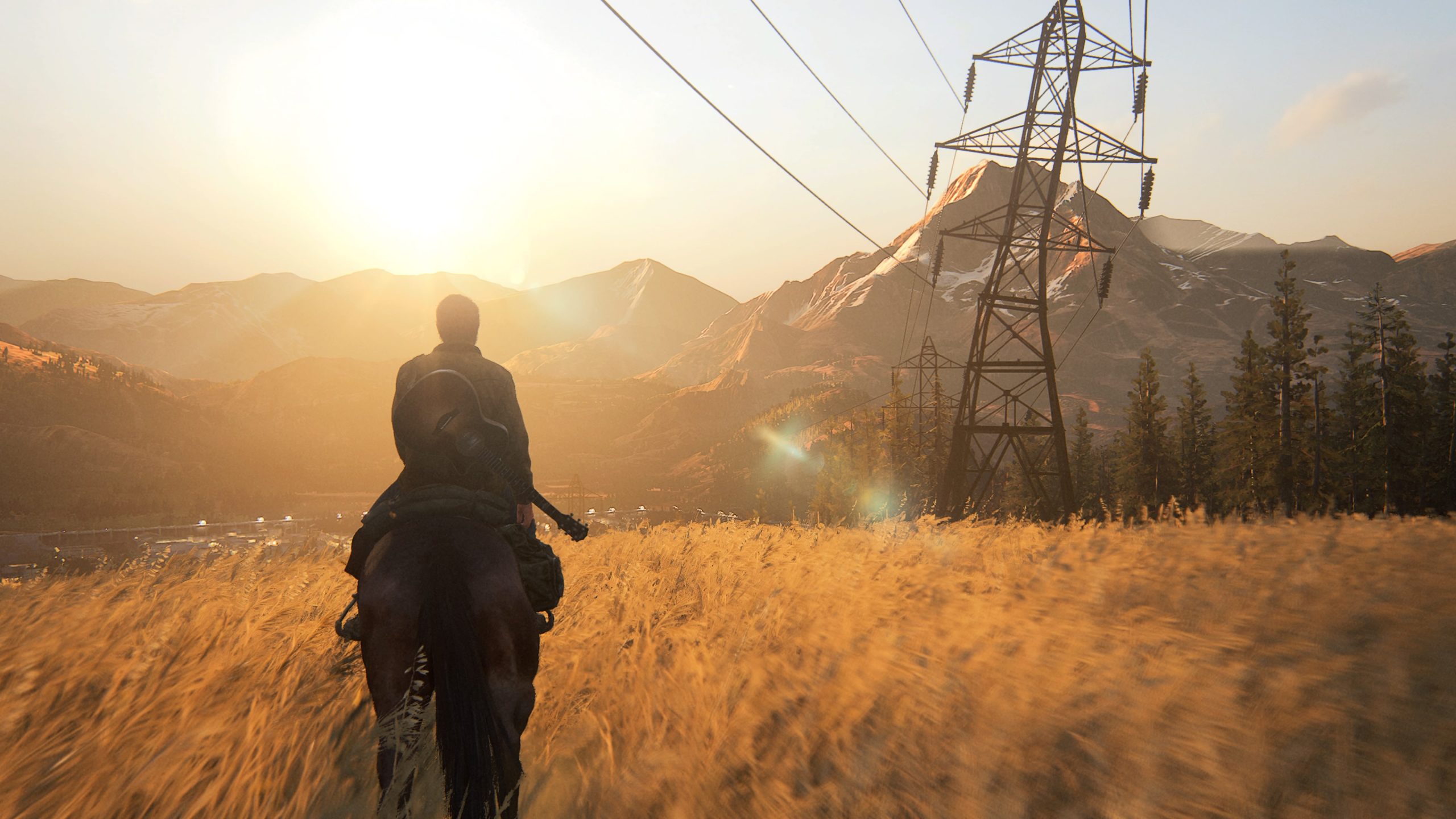2020 has been a year full of releases that have either been a long time coming (Final Fantasy VII: Remake, Cyberpunk 2077) or that I could never imagine happening at all (Half-Life: Alyx), The Last of Us Part Two is somehow a mix of both. It’s a huge Sony first-party exclusive title and comes with all the marketing and hype one would expect, and yet having finished it it’s astounding how unprepared I was for everything this game does.
Part Two is pretty upfront about the kind of story it’s going to be after only an hour or two of playing, and yet over the proceeding 20+ hours, it slowly morphs into a different kind of beast. What writer and creative director Neil Druckmann and co-writer Halley Gross have managed to do here is magical. They’ve weaved a deeply personal, painful, and challenging narrative that cuts you open, fillets your identity, stuffs it with new perspectives and emotions, and then stitches you only half of the way back up. The rest of the job is left to you.
Watching the credits roll I felt as if I’d just woken up from surgery: raw and exposed. I didn’t want to talk about what I’d just experienced while also wanting desperately to unpack and analyse every little moment, expression, and line of dialogue. In a lot of ways Part Two would benefit from two separate reviews, one that looks at it as a game: how it plays, the visuals, the audio, the combat, and another that focuses purely on the narrative: characters, plot, meaning, spoilers be damned. In the interest of not wanting to spoil things, this review will be, for the most part, the former.
Five years have passed since the end of the first game, Ellie and Joel have been living a relatively idyllic life in the walled settlement of Jackson. For those new to the series, this world has been ravaged by the fungal Cordyceps virus, turning people into feral, mushroom-faced monsters. The remnants of humanity have split into violent factions, some who rule their community with an iron fist, others little more than bandits, some even resorting to cannibalism. Jackson, by comparison, is about as peaceful a place as we’ve seen in this world: there are markets, agriculture, schools, and even social dances.
Ellie has recently begun a romantic relationship with a girl called Dina, and the opening hours are spent with the pair going on a patrol through the wilderness surrounding the town together. Naturally, this peaceful time is short-lived and Ellie must soon travel to the flooded, overgrown ruins of Seattle on a quest for revenge.
The performances are as brilliantly acted and deeply emotional as the first game, whether it’s the fully mo-capped scenes that pick up every little nuance in facial expression and body language or just the regular voice-acted lines throughout. Part Two is a tapestry of every human emotion conceivable. From humour in the face of agonising death to pure, atavistic rage, from the malignancy of grief to the throws of young love. Above all, it’s about the endless cycle of violence and how people try to come to terms with losing the ones they love. Few studios can hold a candle to Naughty Dog when it comes to cinematic storytelling in video games, and that bar has been raised even further with The Last of Us Part Two.
If you’ve played the original Last of Us or even Uncharted 4 you will have a basic idea of how Part Two plays. It’s a third-person shooter with a strong focus on scavenging ammo, crafting tools, and stealth. You’ll take cover behind walls, shoot a hell of a lot of people, and traverse environments by clambering over walls, climbing ropes, smashing windows, and of course, moving dumpsters and ladders around. To their credit, Naughty Dog has cut back the amount of ladder and trolley-based puzzles significantly.
There are a couple of new additions that spice things up: namely the ability to go prone and ropes. Now, the technology behind the ropes probably took the programmer behind it an ungodly amount of time (good on you, whoever you are!) but its implementation is fairly limited. You can throw power cords over fences to open a distant locked electronic door or toss it over a pipe to swing across a gap, that sort of thing. It’s a fun tool to have but doesn’t have a lasting impact on the experience. Going prone, on the other hand, adds a lot. Not only does it allow for a little more nuance and realism in the level design, it also gives you more freedom when it comes to stealth.
The combat arenas have never been so large and varied and being discovered by an enemy no longer means you’re locked into an all-out gunfight. With the advent of going prone even short grass can offer you enough cover to slip out of sight, resetting back to a stealth state. This allows for a hit-and-run style of combat which is a lot of fun to play around with.
Another spanner in the works is that some human enemies employ the use of dogs, who will, after a time, acquire your scent and start slowly honing in on your location regardless of how well hidden you may be. It’s another element to be aware of and forces you to stay on the move. You can also dodge in melee combat now with a press of L1, this isn’t something you can spam but does allow once again for a little more freedom when things start to go pear-shaped. As a whole, the combat just works like a well-oiled machine. The various tools and upgrades you acquire throughout your journey are as useful as they are entertaining to unleash upon the various combatants of this apocalyptic world, and the attention to detail is extremely impressive (if occasionally disturbing).
Each human NPC you come up against appears to have been assigned a name. So if you shoot an enemy in the head you might then hear her buddy scream out “Grace, no!”. Similarly unsettling is that shooting someone won’t always kill them instantly, you may see them drop their weapon and fall to the ground, but their screams will continue. All of this adds a grounded element to what is such a familiar activity in video games: killing endless waves of people. The violence itself is also confronting, Naughty Dog makes you feel every kill whether it’s an explosive arrow tip to the chest or a lead pipe across the face. The extreme violence found throughout is effective and tonally appropriate for the most part, however, there were one or two occasions where I wished they dialed it back a bit.
If there is one thing about Part Two that feels stale it’s the looting. Whether it’s for crafting materials, ammo, or lore documents, the endless search for openable drawers and hidden stashes became tiresome on more than one occasion. Something about entering a building, scanning every surface for things to pick up or interact with, then checking every door before moving on, perhaps it’s just me, but it eventually took me out of the experience. It began to feel like I was just processing a series of shapes and ticking off boxes rather than progressing through a wonderfully crafted world. Thankfully this feeling didn’t persist for the entire game, just a few locations towards the middle, but it was enough to make those sections feel like a slog.
The graphics are just absurd. Naughty Dog is arguably the best in the industry in a lot of fields, but the visuals on display here are truly on another level. The wonderful work of Ashley Johnson as Ellie, Troy Baker as Joel, and Shannon Woodward as Dina among many, many others is rendered with such high fidelity, such care, and detail, that it makes the characters in other cinematic games look like talking dolls. The ruins of Seattle, from the dense forests on the outskirts peppered with the wrecks of cars to the city streets turned into rushing, perilous rivers, are an absolute wonder to behold. The sheer variety of locations on display here is also mind-boggling: a museum, school, TV station, a run-down old theatre, aquarium, and an arcade just to name a few. From beginning to end Part Two is a visual feast.
While the original Last of Us composer, Gustavo Santaolalla, has returned for the sequel, his trademark, soul-rending acoustic guitar is far less prevalent this time around. His contributions are certainly as sorrowful and effective as ever when they do appear, especially in the credits, however, the electronic work of Mac Quayle also deserves a mention. A lot of Part Two has this barely contained buzz of dread hiding just below the surface, and this is largely thanks to the fantastically tense, relentless, pulsating beats of Quayle’s ambient tracks. They’re undoubtedly both great musicians, but of the two I think Mac’s work will leave a more lasting impression.
Sound design is another area that Naughty Dog excels in, and Part Two is no exception. You’ll want to play this one with headphones. The sound of rain hitting a ruined suburban street, birds chirping in a windy forest, the roar of concrete waterfalls, clickers screeching in the distance, reloading a bolt-action rifle, explosions. Everything is crisp and clear and isn’t afraid to pack a punch when it needs to.
Every aspect of The Last of Us Part Two has been finely tuned to create a world that is one of the most immersive, realistic, and confronting I’ve ever experienced, matched only by the story they use this world to tell. The tale of Ellie’s journey in Part Two is unconventional, uncomfortable and dense. The thoughts and feelings tearing through my head after completing this game were a lot to make sense of at first. This is a story that asks a lot of you, emotionally and mentally.
After sleeping on it, however, I came to a realisation: no matter where I landed concerning the narrative decisions Naughty Dog made, the turmoil I was grappling with as the credits rolled meant that I’d been challenged in a way that very few narratives across any medium manage to do. It would’ve been wholly unsatisfying for this follow-up to be a rehash of Joel and Ellie’s first journey or for them to try to hit the same kind of emotional notes. Neil Druckmann, Ashley Johnson, and Troy Baker said way back in 2016 after the game was first announced that they weren’t about to do a sequel unless they thought they had a story ambitious enough to warrant one. With The Last of Us Part Two I think they’ve delivered on that promise and then some.
Rating: 9.5/10
The Last of Us: Part Two was reviewed on a PlayStation 4 Pro using a code provided by Sony.

